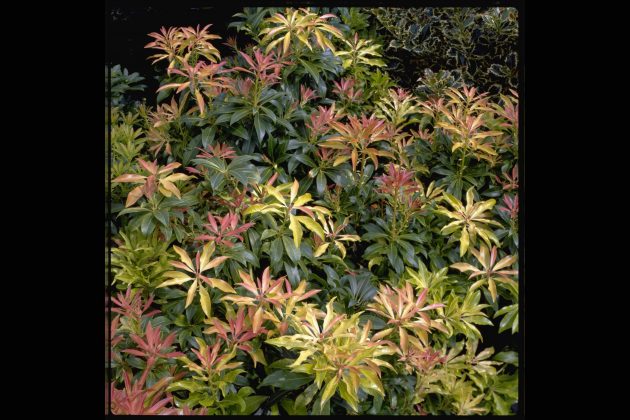Purple-, red- and yellow-leaved plants and trees seem to be everywhere. But while there is a place for such an aesthetic, coloured foliage is rarely found in Ursula Buchan’s own country garden
What is it with gardeners and coloured foliage? Why do purple, red or yellow leaves seem to appeal so strongly? Is it a positive aesthetic reaction to these colours or is it that garden centres push them so hard, as ‘exciting’ alternatives to the supposedly boring old green versions of shrubs, trees and perennials, that it is hard to escape buying them? I admit that I used to be a devotee of coloured leaves but that was when everything was new to me and seemed hallowed by the approval of more experienced gardeners. But I have increasingly found that, when I see them in the countryside, especially where village gardens are part of a wider rural landscape, they affect me like a piece of grit in the eye.
So hypersensitive have I become that even a purple beech in a country churchyard can make me wince. And any pleasant walk down a rural lane is instantly spoiled if I come across a hedge of ‘Castlewellan Gold’, the yellow-foliage version of the Leyland cypress. Along with ‘Castlewellan Gold’, the coloured-foliage plants you are most likely to encounter are the purple cherry (Prunus cerasifera ‘Nigra’), the purple versions of elder (Sambucus nigra), hazel (Corylus maxima ‘Purpurea’) and beech (Fagus sylvatica ‘Purpurea’), Spiraea japonica ‘Goldflame’, Robinia ‘Frisia’. As well as, Philadelphus coronarius ‘Aureus’, Cotinus obovatus ‘Grace’ and Cotinus coggygria ‘Aurea’, and Photinia ‘Red Robin’. You will see many of these as you drive down a village street, sometimes grouped together as if threatening purple and dingy yellow were an inspired combination.
Coloured foliage is all about context
I confess that one of the first things I did when we moved to our present house was to cut down a healthy, yellow-leaved Robinia ‘Frisia’ that grew in the garden, close to the road. That is because, to me, context is all. Gardens in towns, suburbs and cities are set in such an unnatural environment that pretty well anything goes – although I do find it a relief when I come across a city garden where a symphony of greens predominates. But in the countryside, where so many handsome and various green-leaved native trees and shrubs are found, coloured foliage introduces a hectically restless element that can ruin any peaceful view. (Although I may seem like a thoroughly grumpy purist, I am not an absolutist in this. In a dark, shady corner of a garden, a golden Philadelphus coronarius ‘Aureus’, whose leaves burn up in strong sun in any event, can help lift the gloom. But I am careful not to overdo it.)

Coloured plants catch the eye but context in planting is everything
Coloured-foliage plants are either mutations, or ‘sports’, from green-leaved plants, which have then been vegetatively propagated to preserve the colouration, or they have been deliberately bred, using a number of species in the same genus, as is the case with Heuchera or the herbaceous geraniums, for example. I might add that I mind far less about perennials, since they are usually safely tucked behind a fence or hedge, and garden owners are perfectly entitled to suit themselves what they grow in their own private, secluded domains.
The allure of coloured plants
To be fair to gardeners, coloured plants usually look much more alluring than their green-leaved versions when growing in garden centre pots. And we all feel a great disinclination to dig up any plant, once it’s established and growing well, when we discover our mistake, especially if it has cost us good money. However, I do think that we should use our power as consumers to create a greater demand for green-foliaged shrubs and trees, at least when planting in rural situations. There is plenty of woody nursery stock out there that will do the job.
I have, for example, planted a hedge of the evergreen holm oak, Quercus ilex, behind a three-foot limestone wall between my garden and the village street. Although this oak hails originally from the Mediterranean region, it was introduced in the 16th century and most people assume it’s a native. It has proved perfectly hardy in a cold, dry, north-facing spot in the Midlands and the dark green, mature leaves, topped in spring with grey-green fresh growth, seem beautiful and congruous to me. True, if left to its own devices, it can grow into a substantial, long-lived tree, so must be trimmed diligently at least once a year to keep it to a height of six foot; much like purple beech or ‘Castlewellan’ cypress, in fact, but a great deal more sympathetic to the context in which it is grown.
Want to read more from Ursula Buchan on gardens?
If you enjoyed this feature, take a look at Ursula’s feature on garden roses and how to tackle weeds in the garden.





